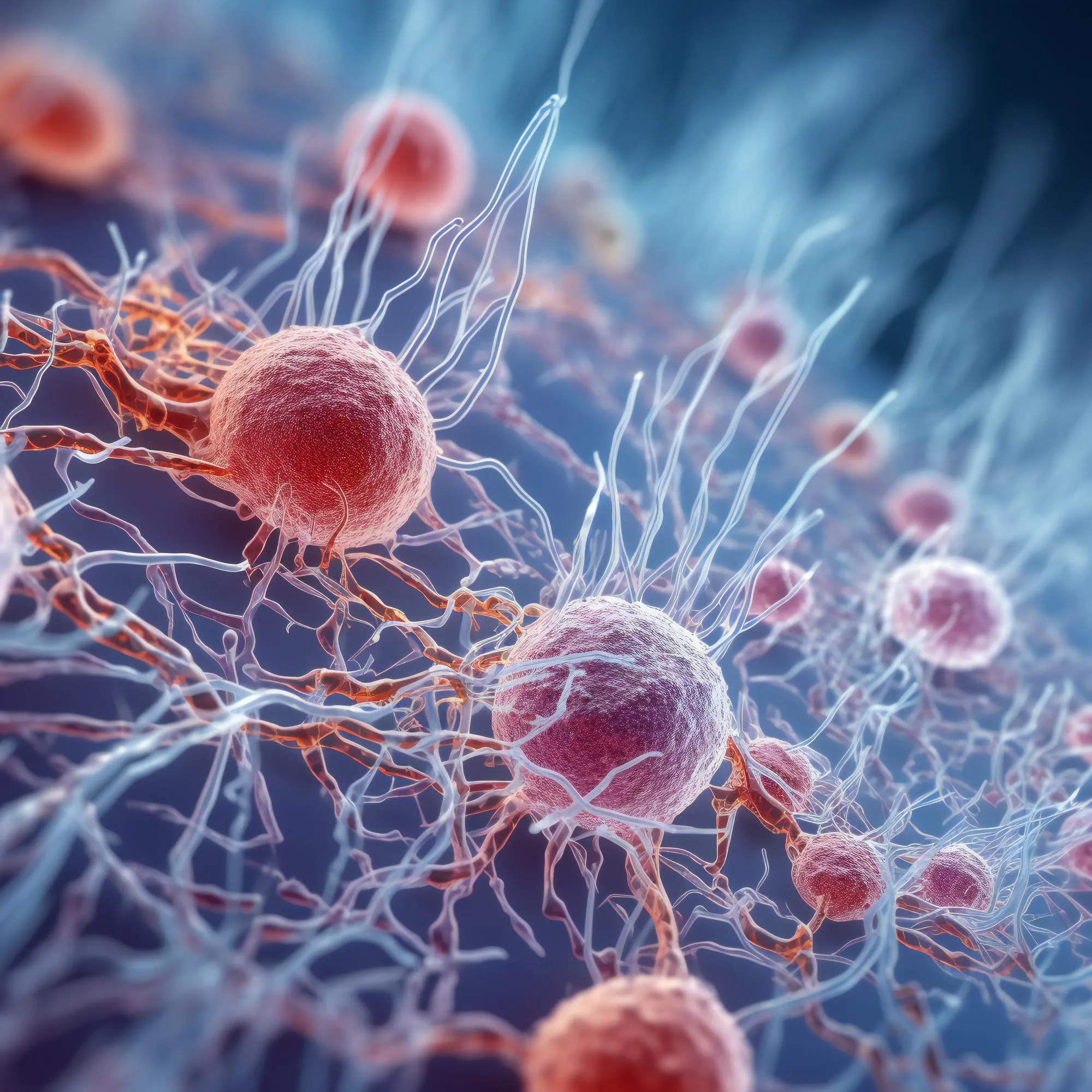Keywords
1. DNA methyltransferase inhibitor
2. Cancer epigenetic therapy
3. Demethylating compound MC3353
4. Cancer cell proliferation arrest
5. DNMT inhibitor efficacy
A team of international researchers published a groundbreaking study in Clinical Epigenetics, unveiling a novel quinoline-based compound, MC3353, displaying remarkable potential in combating various types of cancer. The study demonstrates MC3353’s efficacy as a non-nucleoside DNA demethylating agent significantly potent in both reducing cancer cell proliferation and inducing cell death. Through meticulous research and collaborative effort, these findings open new vistas in epigenetic cancer treatment. This comprehensive report delves into the characteristics of the compound, its therapeutic prospects, and the pivotal role it may play in future cancer therapy.
The Promise of DNMT Inhibitors in Cancer Therapy
DNA methyltransferases (DNMTs) are a class of epigenetic enzymes that play crucial roles in embryonic development, cell differentiation, and gene expression regulation. Abnormal activity or overexpression of DNMTs has been closely associated with cancer initiation and progression, drawing attention to their inhibitors as potential cancer therapies. To date, two DNMT inhibitors (DNMTi) have been approved for clinical use: 5-azacytidine (5-AZA) and 5-aza-2′-deoxycytidine (DAC). Despite their approval, these agents come with significant drawbacks such as chemical instability and toxicity to healthy cells – highlighting the urgent need for novel and improved DNMTi (Kelly et al., 2017; Paluch et al., 2016; Jones et al., 2016; Arrowsmith et al., 2012).
Discovery and Impact of MC3353
The quest for alternative DNMTi led to the identification of MC3353, a non-nucleoside inhibitor and downregulator of DNMT. Preclinical studies show that MC3353 induced demethylation and reactivation of epigenetically silenced genes, such as the ubiquitin C-terminal hydrolase L1 (UCHL1) in cancer cells. Zwergel et al.’s study highlights the superior demethylating capability of MC3353 in HCT116 colon cancer cells, compared to 5-AZA and DAC (Zwergel et al., 2019).
Using a series of in vitro assays, researchers showcased MC3353’s antiproliferative prowess on a panel of cancer cell types, including acute myeloid leukemia (KG-1 and U-937), Burkitt’s lymphoma (RAJI), prostate cancer (PC-3), and breast cancer (MDA-MB-231). These assays revealed a time- and dose-dependent arrest in cell proliferation and a reduction in cell viability within just 48 hours of treatment with MC3353 (Valente et al., 2014).
Furthermore, MC3353’s cytotoxic effect was evaluated in double DNMT knockout HCT116 cells, with higher doses eliciting cell death, an indicator of the compound’s effectiveness beyond its DNMT inhibition mechanism. Interestingly, MC3353 exhibited promising results in primary osteosarcoma cell models, affecting genes linked to osteoblast differentiation (Manara et al., 2018).
Mechanisms of Action and Therapeutic Potential
MC3353’s demethylating capability can lead to the re-expression of tumor suppressor genes and alteration in cellular mechanisms central to cancer pathogenesis such as epithelial-to-mesenchymal transition (EMT). EMT is implicated in cancer metastasis, and the study showed that MC3353 modulates key proteins involved in this process, like E-cadherin and MMP2, which reinforces the therapeutic potential of MC3353 as an anti-cancer agent (Cardenas et al., 2014; Pereira et al., 2014).
Safety and Efficacy Across Cancer Types
The study underlines a key benefit of MC3353: its lower toxicity to healthy cells when compared with existing DNMTi. The potential of a DNMTi with fewer off-target effects and higher stability is significant, as it encourages the advancement toward clinical applications and a favorable therapeutic index (Guianvarc’h et al., 2014; Gros et al., 2012).
The diverse range of cancers that responded to MC3353 treatment in the study underscores the compound’s versatility and is an encouraging sign for its translation in clinical settings. It is not common for a single agent to exhibit such a broad spectrum of activity, and this positions MC3353 as a promising candidate for drug development and combinational therapies (Rondelet et al., 2017; Zwergel et al., 2016; Datta et al., 2009).
Conclusion and Future Prospects
The groundbreaking findings of this study position MC3353 as a powerful DNMTi, offering a ray of hope for patients suffering from various cancers. With its novel mechanism and reduced toxicity, MC3353 could revolutionize the current paradigm of epigenetic cancer therapy. While preclinical results have been promising, the path toward clinical implementation necessitates further research and development to understand MC3353’s full therapeutic potential and the long-term implications of its usage.
Ongoing and future clinical trials will be pivotal in determining MC3353’s role as either a standalone therapy or in combination with other cancer treatments. The quest for cancer cures is perpetual and complex. However, advancements like the discovery of MC3353 bolster the belief that through research, collaboration, and ingenuity, the elusive cure for cancer edges ever closer (Tripodi et al., 2019; Altucci et al., 2019).
References
1. Kelly, A.D., & Issa, J.J. (2017). The promise of epigenetic therapy: reprogramming the cancer epigenome. Curr Opin Genet Dev, 42, 68–77. https://doi.org/10.1016/j.gde.2017.03.015
2. Paluch, B.E., Naqash, A.R., Brumberger, Z., Nemeth, M.J., & Griffiths, E.A. (2016). Epigenetics: a primer for clinicians. Blood Rev, 30, 285–295. https://doi.org/10.1016/j.blre.2016.02.002
3. Jones, P.A., Issa, J.P., & Baylin, S. (2016). Targeting the cancer epigenome for therapy. Nat Rev Genet, 17, 630–641. https://doi.org/10.1038/nrg.2016.93
4. Arrowsmith, C.H., Bountra, C., Fish, P.V., Lee, K., & Schapira, M. (2012). Epigenetic protein families: a new frontier for drug discovery. Nat Rev Drug Discov, 11, 384–400. https://doi.org/10.1038/nrd3674
5. Zwergel, C. et al. (2019). Identification of a novel quinoline-based DNA demethylating compound highly potent in cancer cells. Clinical Epigenetics, 11, 68. https://doi.org/10.1186/s13148-019-0663-8
